Often mistaken for a duck, the Eurasian coot is a captivating wading bird with a unique adaptation - instead of webbed feet, it possesses spread-out toes. Unlike ducks, coots emerge to the water's surface to feed, adding to their distinct behavior. With eleven diverse coot species and four sub-species of the Eurasian coot, these birds offer a fascinating glimpse into the richness of avian biodiversity.
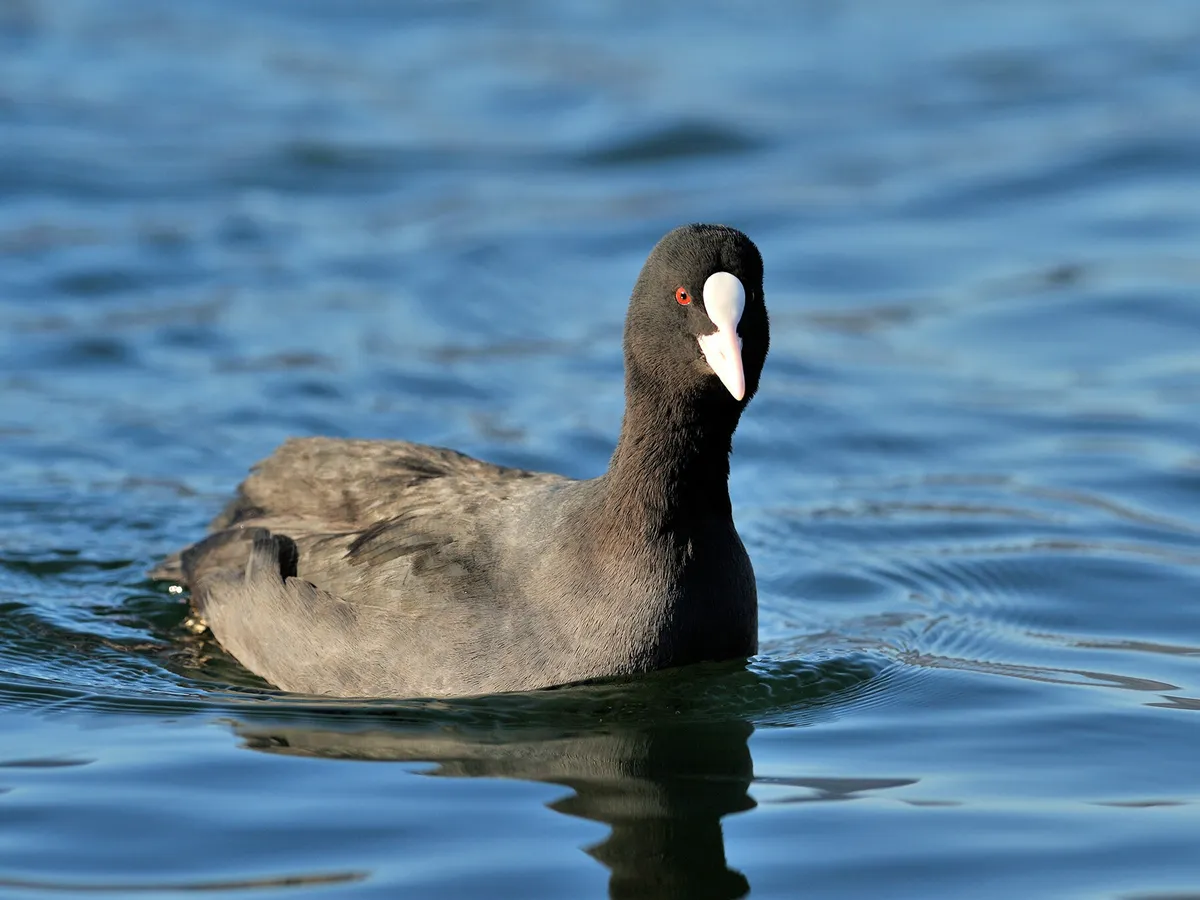
Have you ever seen a Eurasian Coot? If not, let me describe it to you. The male coot has a dark black head and neck, while the rest of its body is a darker shade of grey. During flight, you can see its secondary flight feathers have white tips, which give a pale back edge to the inner wing. Its striking deep red eyes are hard to miss, and its bill is white and extends into a facial shield that goes all the way up to the forehead. This feature is similar to the red face shield of the smaller Common Moorhen, also known as the Eurasian Moorhen.

The coot’s legs are yellow and grey, and its feet are large and pale grey, with toes looking almost bulbous. These toes are technically known as “lobate.” The adult female coot is quite similar to the male but slightly smaller. Juveniles are more brownish-grey with a greyish white throat and underparts and a yellow bill compared to adults.
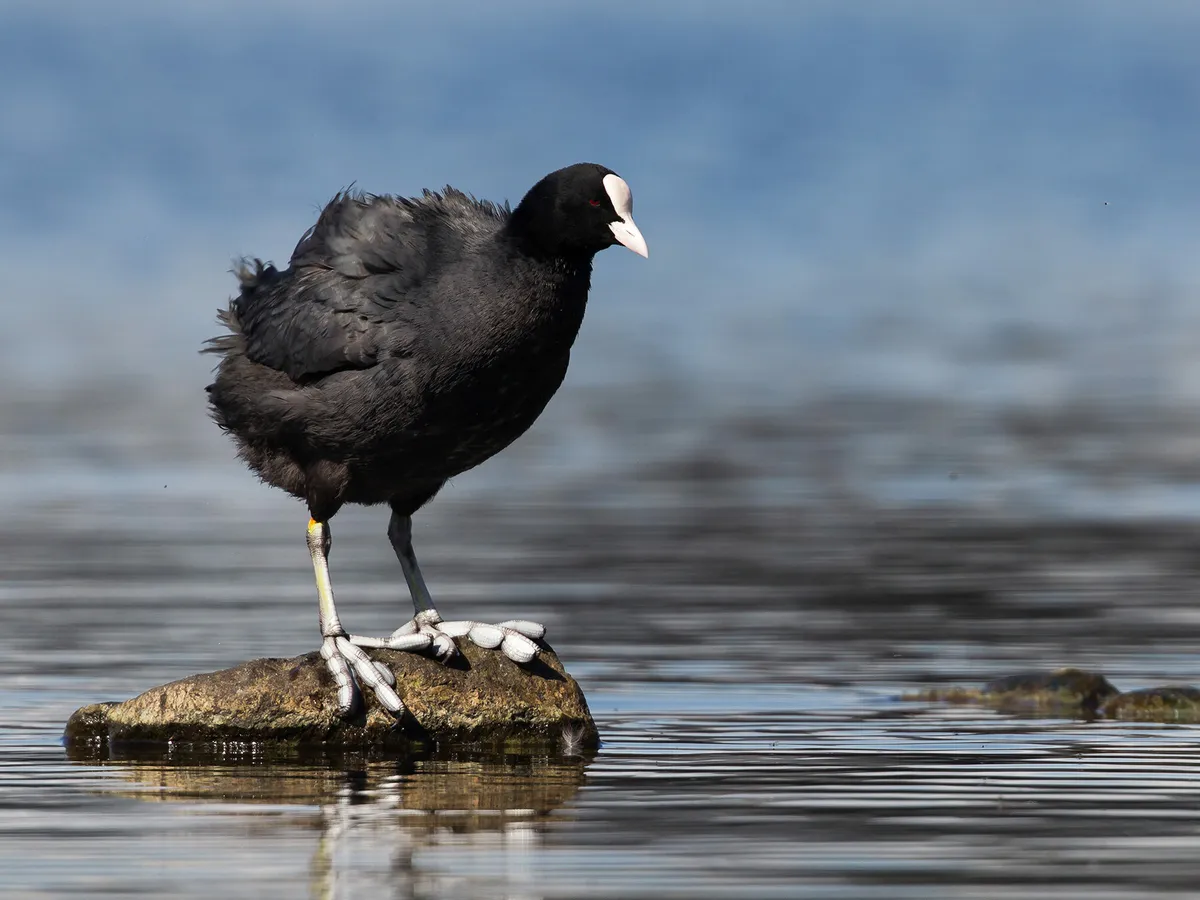
Have you ever wondered about the sound of a Eurasian Coot? These birds may look aggressive and confrontational, especially during mating season. The male coots usually make a sharp metallic clicking sound that can be heard from afar. They sometimes follow it up with a noise that sounds like “kick” or “kick-kick”. So, if you hear these sounds while out birdwatching, you’ll know that a coot is nearby!
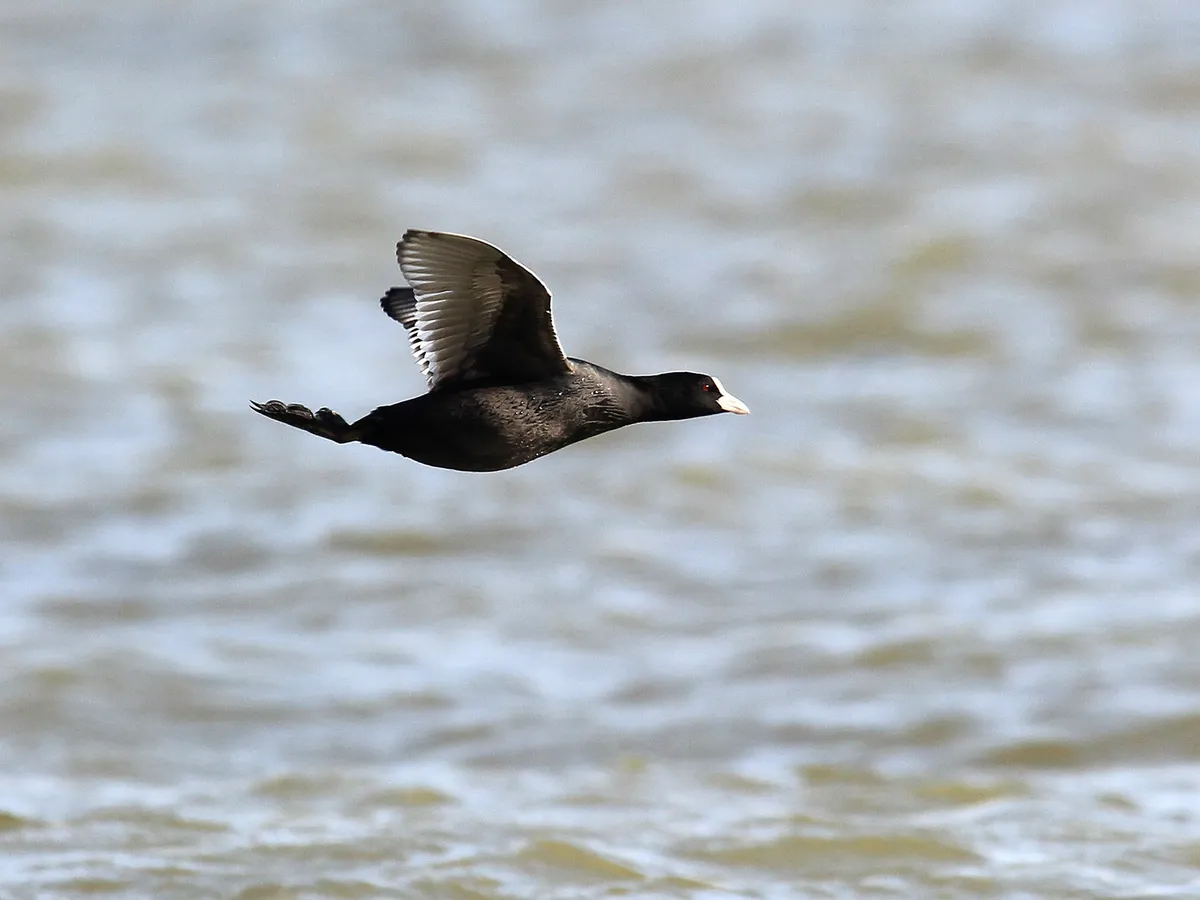
Have you ever wondered what a Eurasian Coot likes to eat? Well, these birds have quite an interesting diet! While they do sometimes snack on tadpoles and snails, they mostly stick to vegetarian options. They love munching on aquatic plants, algae, and grasses that they find either in the water or on nearby land. When they’re looking for a heartier meal, they’ll dive down to the bottom of lakes or reservoirs to search for food. Once they find something tasty, they’ll pop back up to the surface to enjoy their catch.
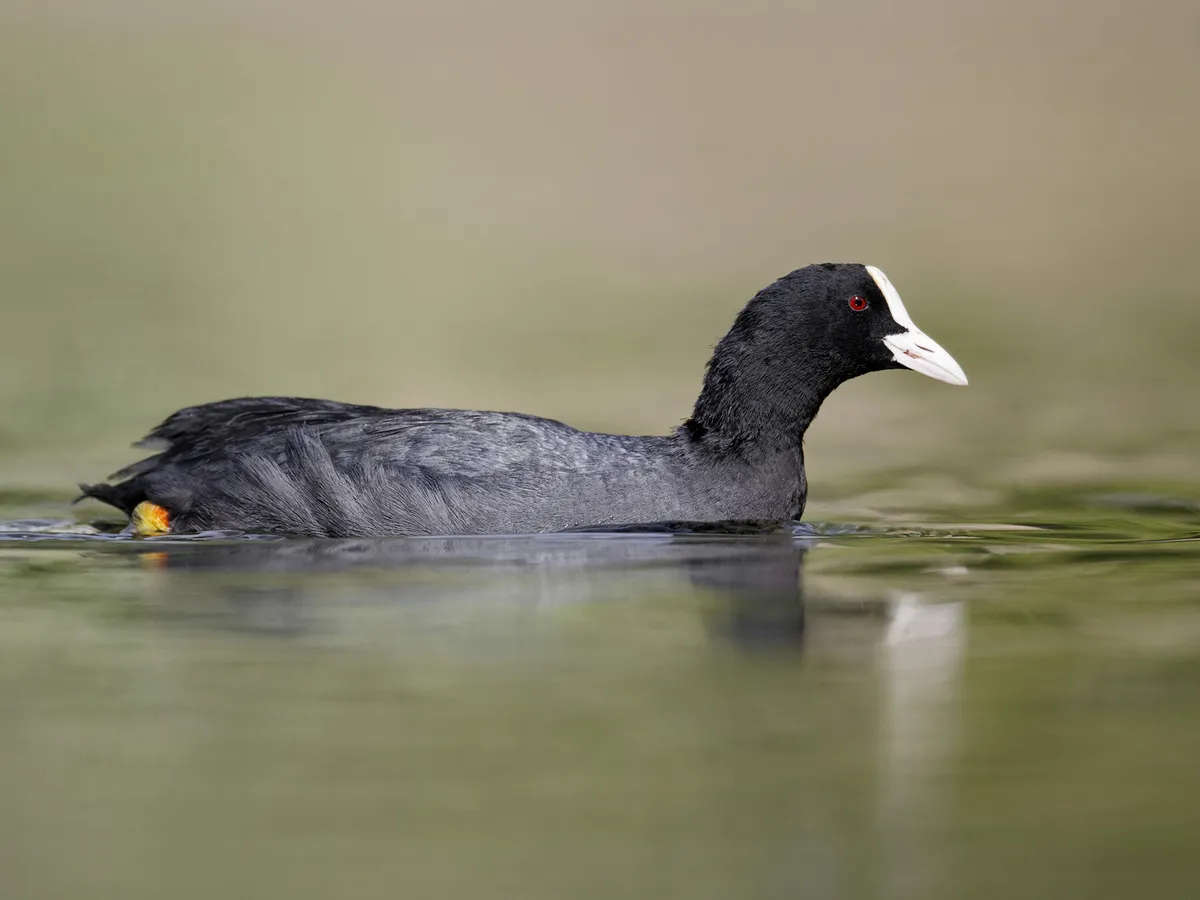
The Eurasian Coot can be spotted in a variety of locations around the world, including Europe, India, Sri Lanka, central Asia, Indonesia, New Guinea, New Zealand, Tasmania, and Australia. These birds have also been known to inhabit North Africa and the north Atlantic islands of the Azores and the Canaries. Some Eurasian Coots remain in their habitats all year long, while others that reside in northern and eastern Europe migrate to areas such as sub-Saharan Africa and South East Asia during the winter season.
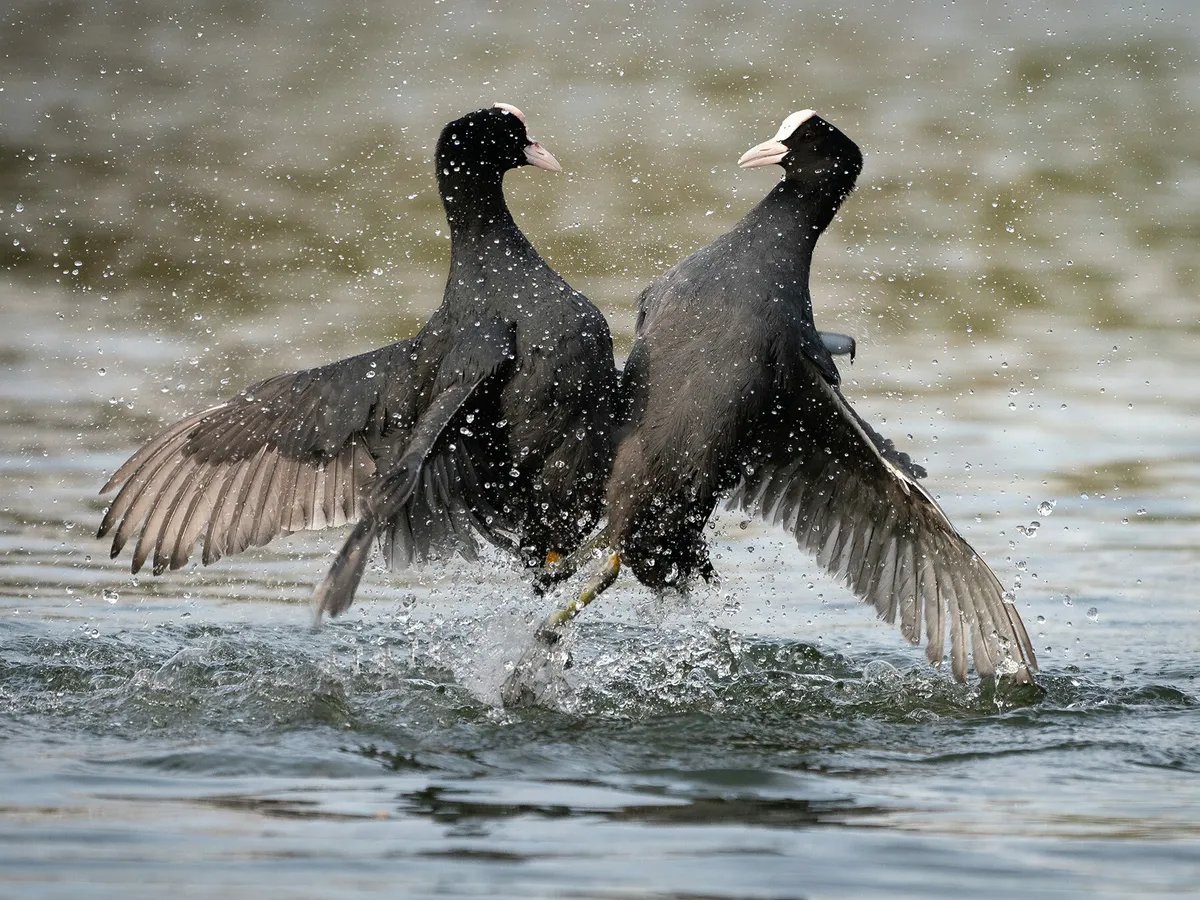
Observing the fierce battles of coots during mating season can be a fascinating sight. These birds prefer to dwell in fresh water habitats such as large lakes, ponds, and even gravel pits with static or slow-moving water. In winter, they can also be spotted in saltwater estuaries and inshore seawater. While coots typically forage for food at the bottom of lakes and ponds, they can also be seen grazing on grasses along the shores. With their distinct white bill and facial shield, coots are easily identifiable, along with their rather unique feet and loud, short vocalizations.
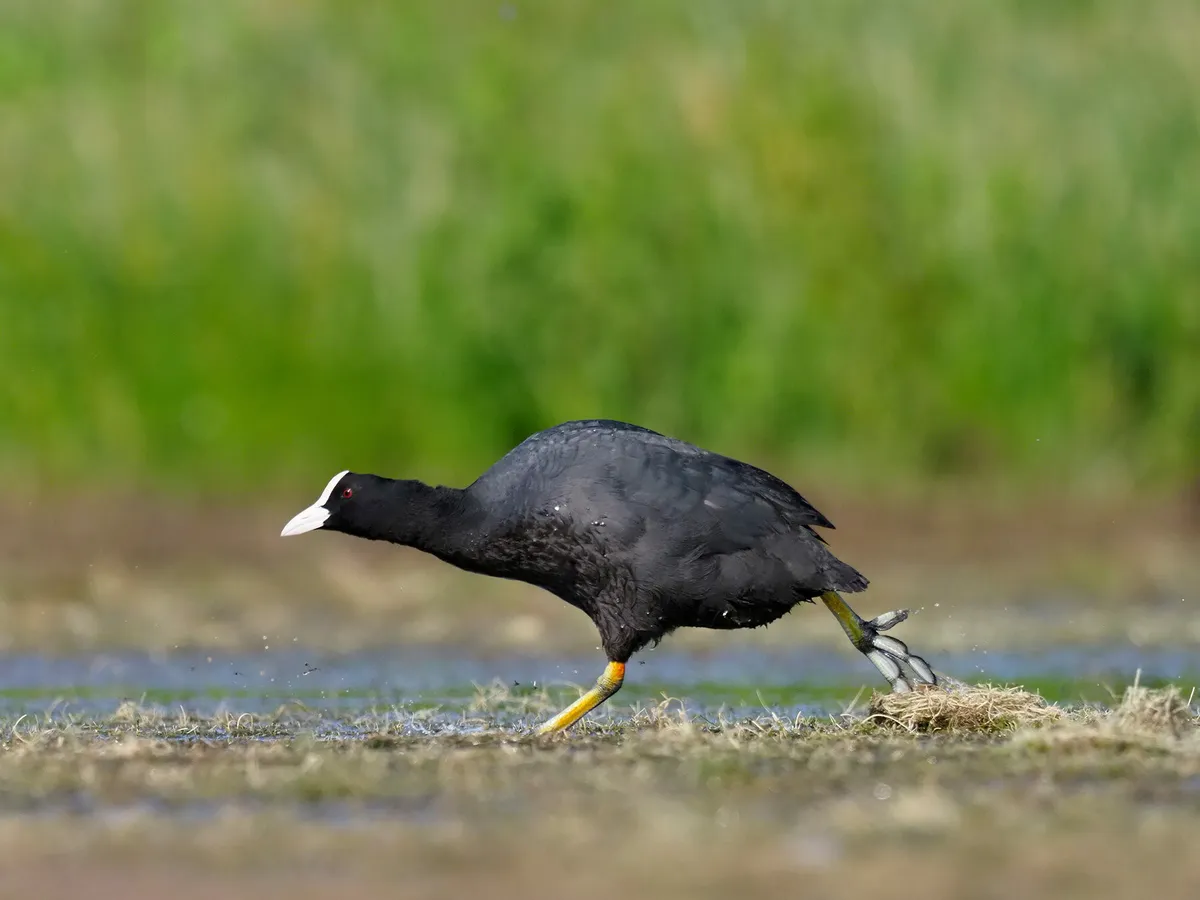
The Eurasian Coot is a waterbird that constructs its nests using a variety of natural materials such as reeds, leaves, roots, and twigs. These nests are usually built from the ground upwards close to surrounding vegetation or overhanging tree branches, although floating nests are also possible but less common. The breeding season typically occurs between March to September in the northern hemisphere, with India being an exception where it occurs from November to December. In the southern hemisphere, breeding occurs between August to February. A single brood, occasionally two, consisting of 6-10 eggs is produced during this time. Incubation of the eggs is done by both parents for a period of 21-26 days, and the young birds fledge an average of 55-60 days after hatching.
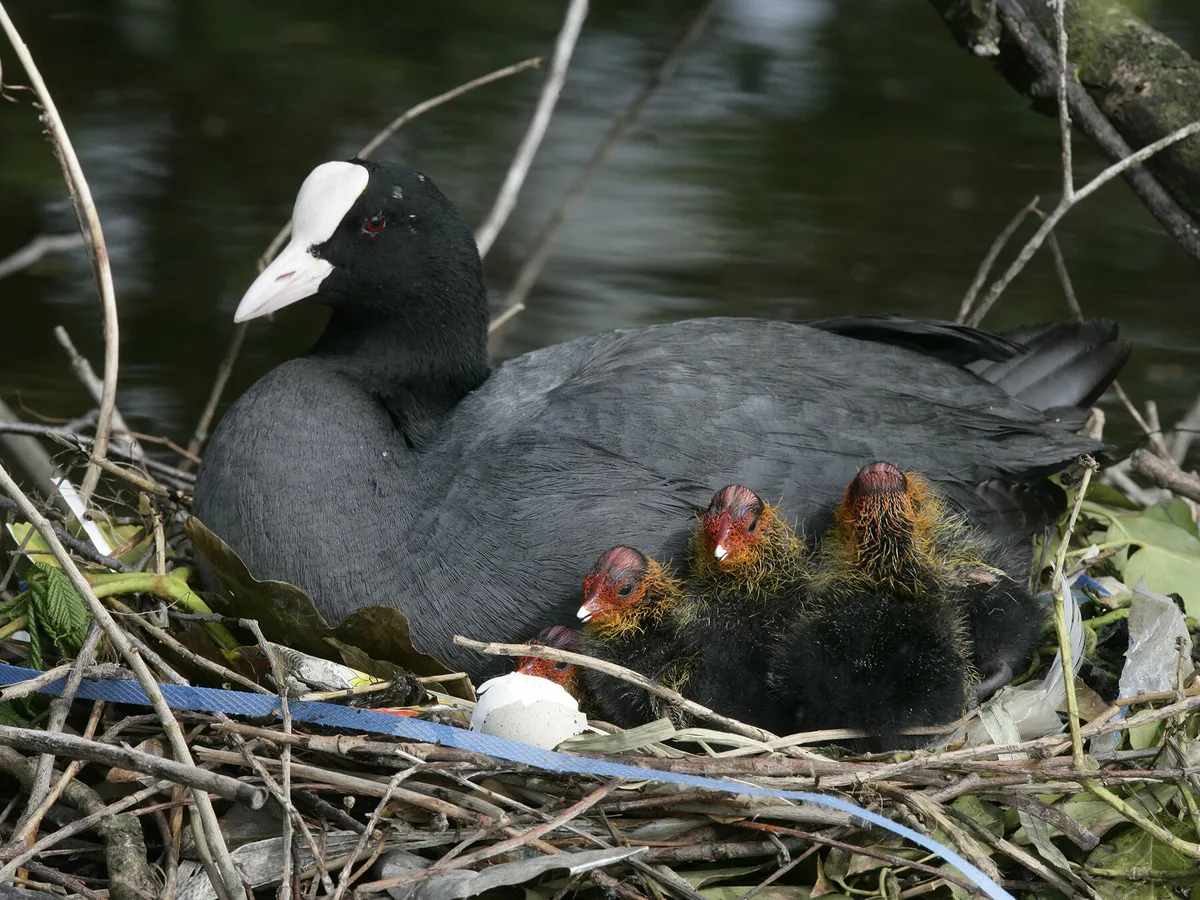
A coot spotted with its adorable chicks in their nest.
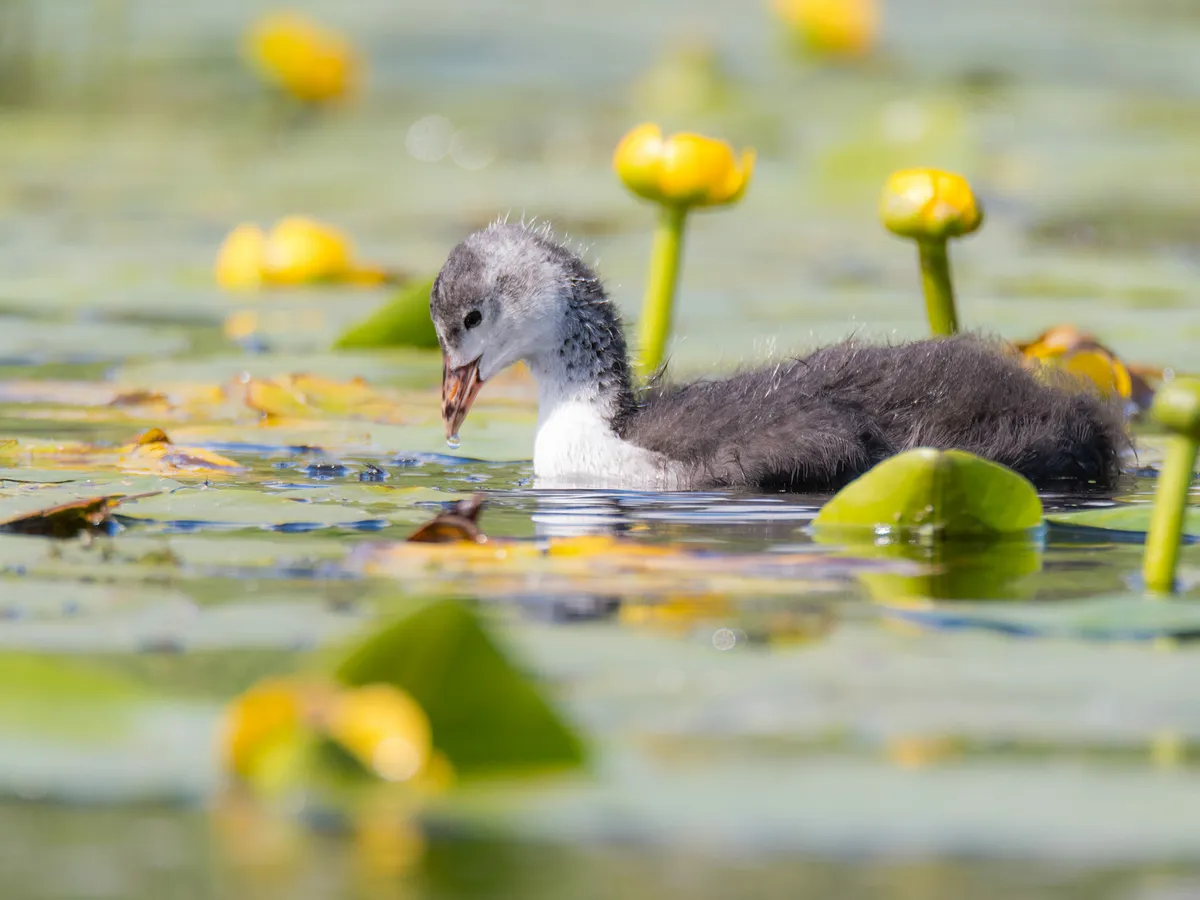
Have you ever wondered about the lifespan of a juvenile Eurasian Coot? Well, these fascinating water birds can live up to fifteen years!



